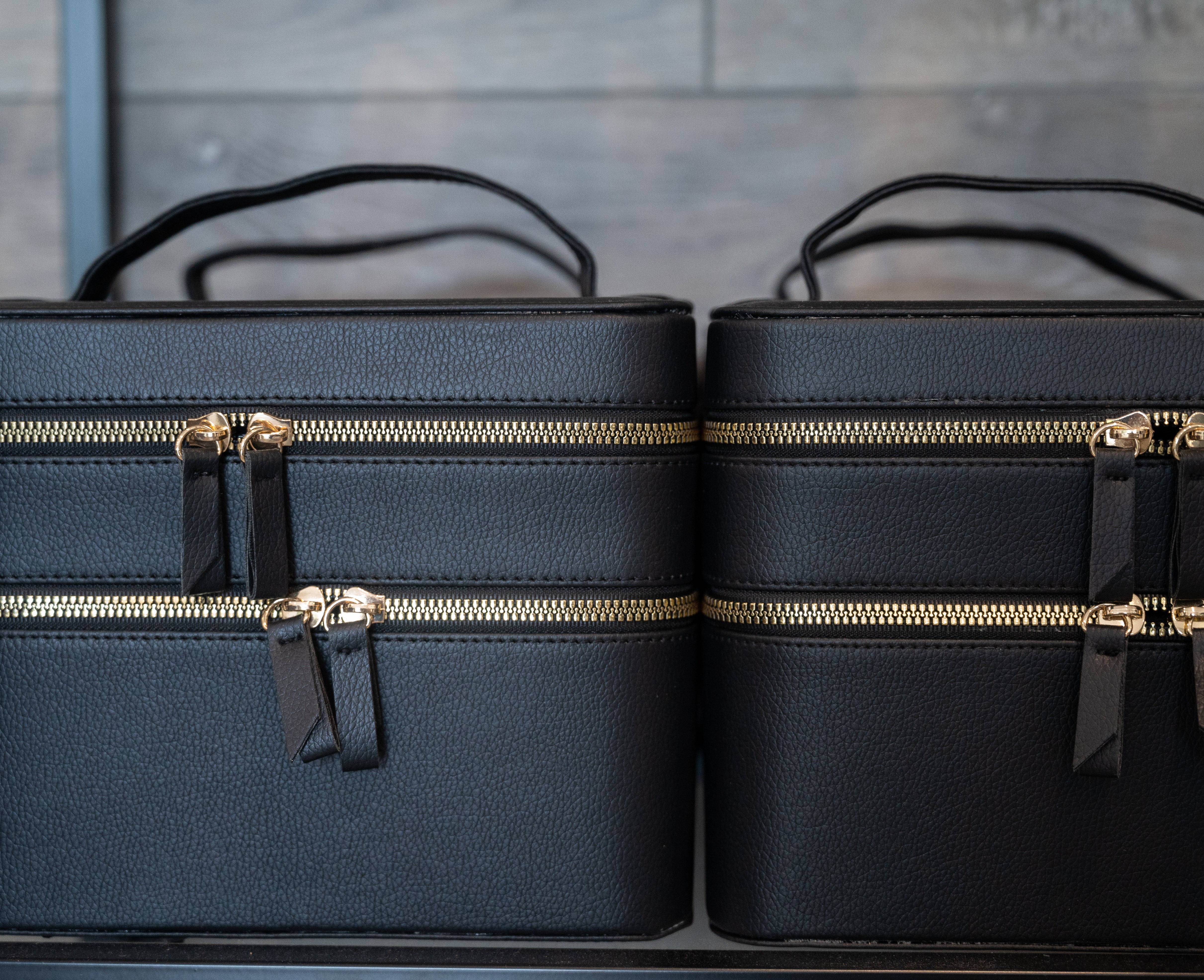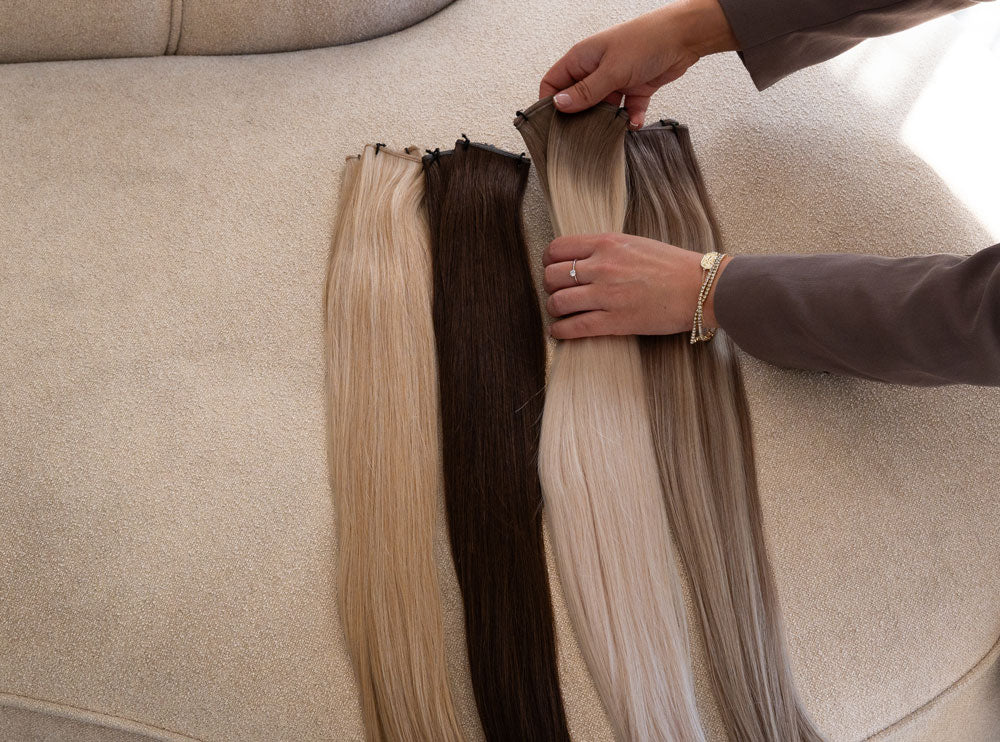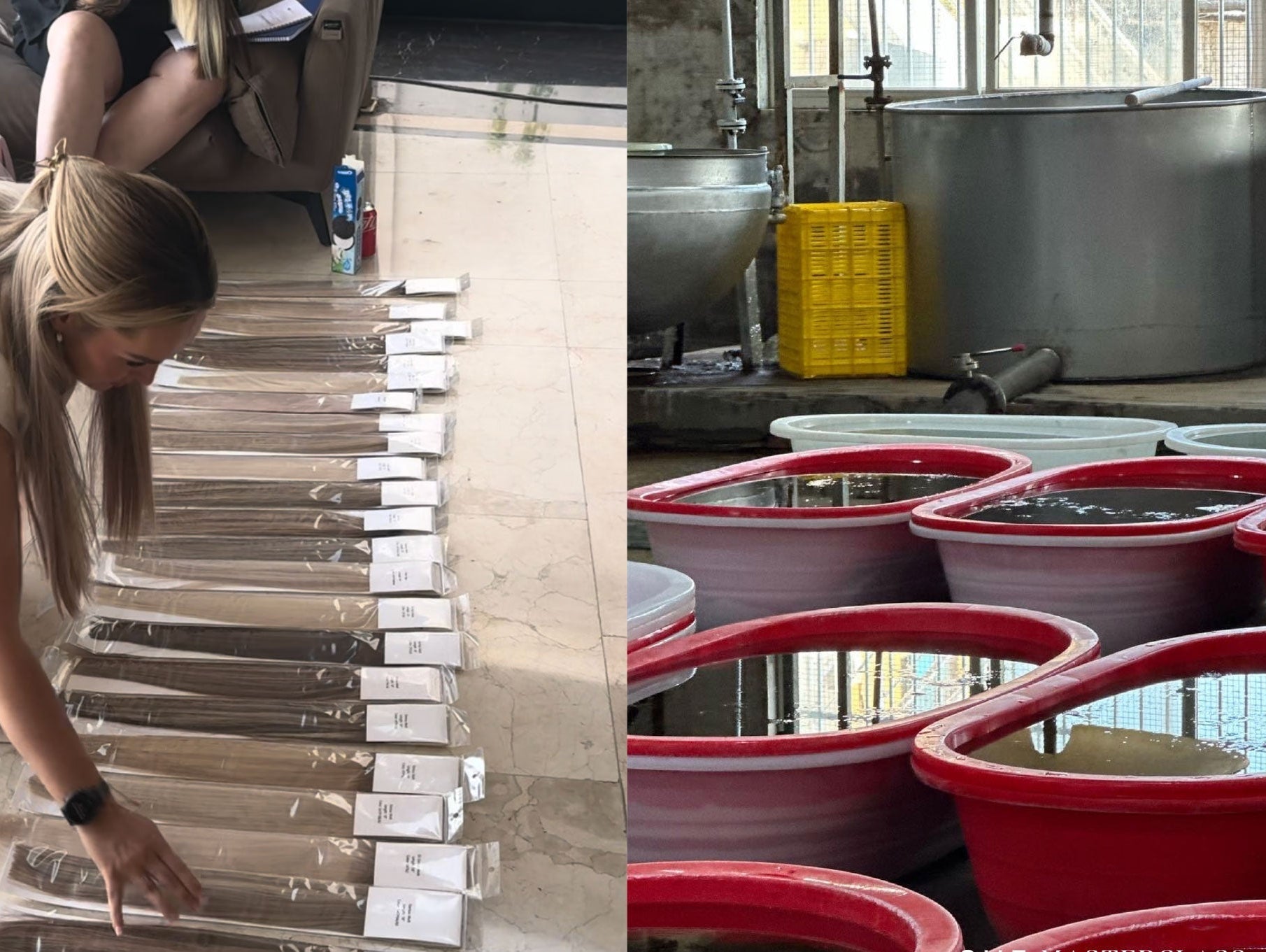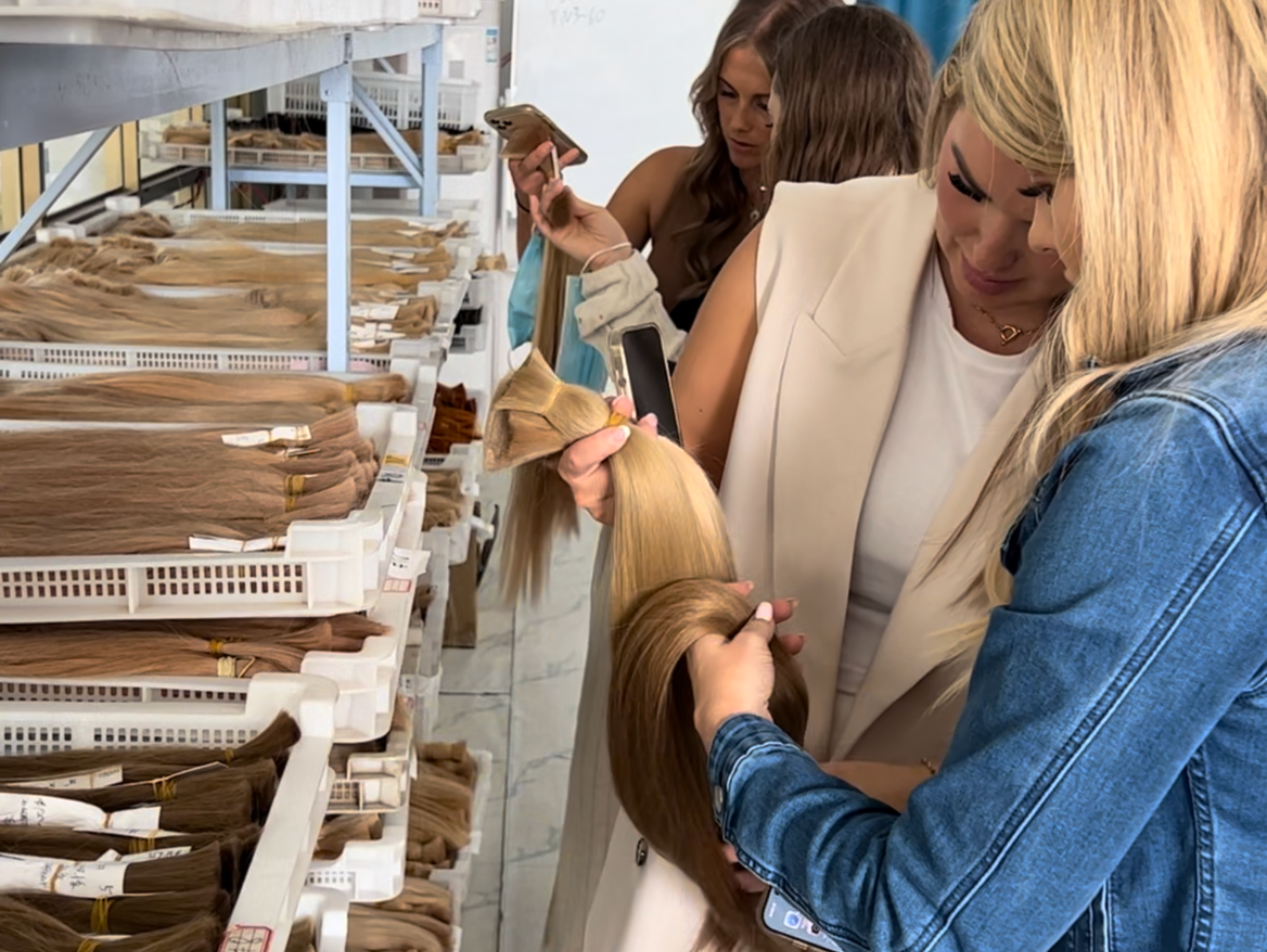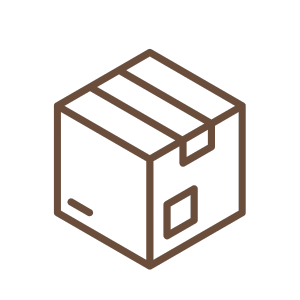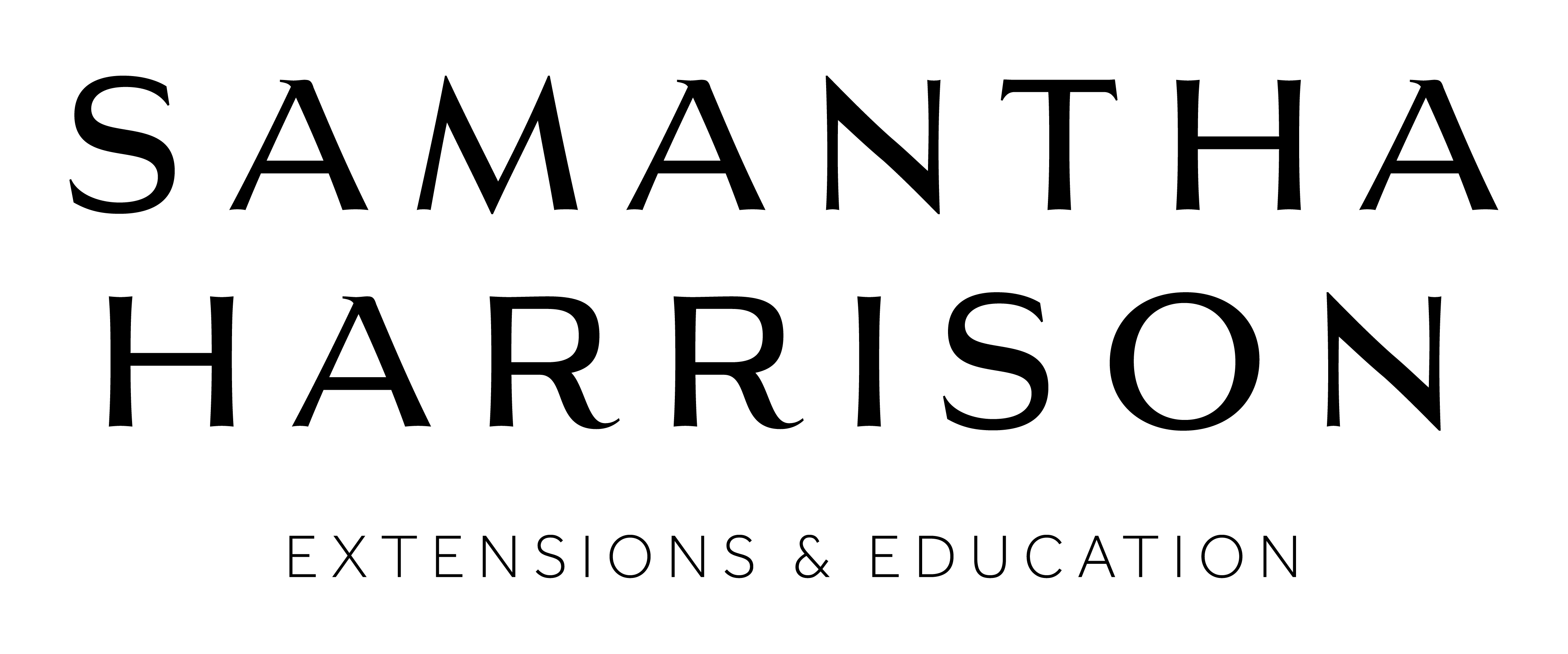I’ve never been afraid to ask the uncomfortable questions…
Like... where the f%k do hair extensions actually come from?
Why do prices vary so much?
And why do so many brands claim their hair is “European,” “Russian,” or “the best in the world”?

I flew to the hair-extension capital of the world: China, on a mission to bring quality hair to Samantha Harrison Extensions.
But when we started asking real questions, what we discovered changed everything we thought we knew about the industry.
💸 Why do some brands charge $200 and others $2,000?
❌ Why do “Russian” or “European” labels pop up everywhere?
💇 And why do extensions that look flawless at first suddenly feel dry and strawy?
I wanted answers. What we found was an industry built on shortcuts, marketing myths, and a serious lack of transparency.
So we set out on a mission to become Australia’s first truly transparent hair-extension brand. Because our hair might be fake… but we certainly aren’t.

What I Discovered
Here’s a fact that surprises most people: around 80% of the world’s human hair extensions come from Asia, mainly China and India.
And guess what? That’s not a bad thing.
Myth: “Asian hair is poor quality.”
Truth: It’s some of the strongest, most consistent hair in the world, and you’ve probably already worn it thinking it was “Russian” or “European.”
Asian hair is naturally strong, thick, and dark, which makes it ideal for colour processing and long-term wear. The problem isn’t where it comes from... it’s what happens next.
Once the hair reaches the factory floor, the real quality story begins.
Chinese vs Indian vs European Hair
Here’s what I learned:
-
Chinese Hair: Thicker, smoother, and stronger. Most donors sell for financial reasons. Ideal for sleek, polished looks.
-
Indian Hair: Finer, with more natural wave and movement. Donated in temples for religious reasons. That’s the “temple hair” you may have heard of.
- European & Slavic Hair: Naturally lighter and finer, rare in availability, requires less processing and costs 10× more to source.
Chinese manufacturers dominate the global market, which isn’t a bad thing when the work is done ethically and with care, but it’s also why there’s so much inconsistency in quality.
What “Remy” Really Means (and why it’s not enough)
“Remy” gets thrown around like a magic word, but here’s what it actually means:
- The hair’s cuticles are aligned in the same direction to prevent tangling.
- It’s collected and sorted to maintain strand integrity.
But here’s the thing: not all “Remy” hair is equal.
It can still be acid-washed, silicone-coated, or mixed with synthetic fibres, so the label means nothing unless you know the process.
Why So Much False Marketing?
-
Because it sells.
“Russian” and “European” sound luxurious... and technically, Russia is part Asian and part European, which helps manufacturers blur the truth. -
Brands not fact-checking suppliers.
The biggest tell? The price point. True European hair costs significantly more, but theres other tell tale signs too which we'll share with you in another blog.
Most “Russian” or “European” hair sold globally is actually Asian hair that’s been rebranded, and once you know that, you can’t un-see it.
How Manufacturers Cut Costs (and Why Quality Suffers)
You know the saying, “If it seems too good to be true, it probably is”?
That applies to hair extensions too.
Many suppliers cut costs by using low-grade, non-Remy hair, running it through acid baths, and coating it in silicone so it feels silky... for a minute.
When it comes to manufacturing, cutting corners is easy, and it happens more often than you’d think.
Here’s how quality gets lost along the way:
-
Processing time
Some factories bleach dark hair blonde in as little as 3 days. Others take 9.
The fast route uses harsh chemicals and high heat that burn the cuticle, leaving the hair brittle and dry.
The slower, gentler process protects the hair’s structure and keeps it silky for longer.
-
Quality control
Ethical manufacturers test every batch for elasticity, colour stability, and strength.
Others skip the testing altogether, they just ship it. -
Ethical sourcing
Donor transparency and fair treatment matter.
When brands don’t know (or ask) where their hair comes from, they can’t guarantee what’s in the packet. -
Manufacturer integrity
You can’t fake care. The factories that take pride in their work are the ones producing consistent, beautiful results, every time.
That’s why I started travelling directly to multiple factories myself, not to point fingers, but to see it all firsthand.
I wanted to understand every step of the process and bring that education home to the industry.
“It’s not about calling people out, it’s about raising the standard for everyone.”
Our Mission: Real Transparency
Our time in China (3 trips so far and more to come!) opened our eyes to how little most brands and stylists really know about how their hair is made.
We saw factories doing incredible, ethical work, and others cutting corners at every step.
Seeing the process first hand defined how SHE Extensions operates today:
✅ We know exactly where every batch comes from.
✅ We choose partners who treat hair like a craft.
✅ We only use processing methods that preserve strength and softness.
“We don’t just sell extensions. We educate, we elevate, and we raise the standard, for everyone.”
Coming next month:
Part 2: Chinese Hair Isn’t the Problem, Manufacturing Is
We're diving deeper into the process.


